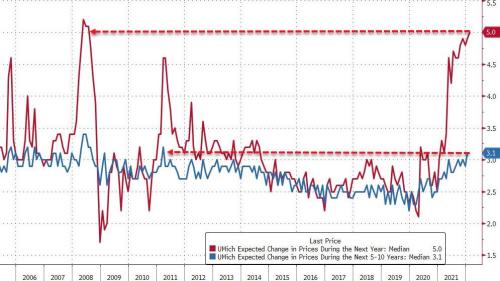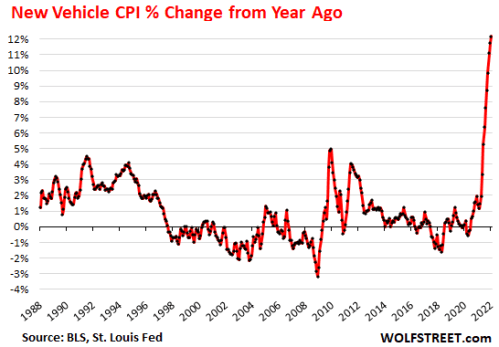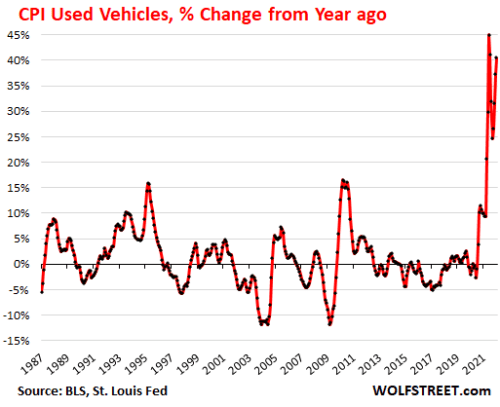I tried my best to give the BLS the benefit of the doubt when it did not massage the inflation rate in its last CPI report lower for January than December as I thought it would. I did, that is, until I dug deeper into what the BLS did do. Now government is at it again. And it’s worse this time!
The first thing I noticed with January’s CPI report was that the BLS did not reduce the weight of housing in its calculations as I thought it would. Since I believe reported housing prices will be catching up with real-market changes in the months ahead until the Fed crashes the housing market (see “Expect the Bureau of Lying Statistics to Tell a Whopper with Thursday’s CPI“), I thought the BLS would reduce the weight of housing as a way of holding down the official CPI inflation rate. Instead, it actually increased the weight of housing! That didn’t look, at first, like a move by the BLS to reduce overall reported inflation (see “How I Struck Out and Hit a Grand Slam with the Same Swing“).
But then I read that the BLS believes housing prices have peaked, and I noticed that the housing inflation rate actually did drop in January even with the increase in how housing is now weighed. So, of course, the BLS increased housing’s weight since they saw the rate would still slip back down a notch even with the increase in weight. That way housing’s decline, which they believe is starting, will help pull down CPI in the months ahead. So, that was a smooth move on their part for January based on what they expect to happen.
It will, however, backfire on them if I’m right about where housing is about to go as past housing price increases slowly work their way into the CPI survey due to the delays I’ve argued are built in. If the BLS is wrong about how housing will pass through via “Owner Estimated Rent,” CPI will be made worse in the months ahead by their change in weight since their own policy only allows them to change weights every two years … unless they change their policy, too.
At the same time, they reduced the weight of energy a lot as if energy somehow matters less to all of us now that it costs more for all of us. Even with that reduction, energy turned out to be a big driver in the new CPI rate; so, imagine how much worse official inflation would have been in January if they hadn’t reduced the weight of energy.
I came to realize that the only reason they didn’t manage to get the annual CPI rate of inflation down from December to January with all their category re-weighting was that they likely couldn’t. They reweighed last month’s worst areas of inflation downward as much as they could reasonably argue for, and by that, they managed to, at least, keep inflation from screaming in as hot as it would have without that massaging.
Now they’ve done it again
Just as I also reported recently on how the government distorts the truth through its massive adjustments in labor and job statistics (see “Federal Job Fakery Hits Peak Balderdash“), it made massive adjustments this week in retail sales in order to prove the economy is not slipping into recession. After all, what says “hot consumer economy” more than hot retail sales?
First, sales came in hot because they are measured in dollar value, and the overall value of the dollar declined 0.6% month on month with last month’s hot inflation. However, that overall inflation rate doesn’t tell the half of it. The inflation rate reported for items for retail sales in January’s earlier CPI report came in much, much hotter than that 0.6%. This week’s retail sales totals do not adjust for inflation. So, inflation makes it look like the economy is soaring with a huge gain in total sales in one month, even though what really happened was everything became a lot more costly, and that is only applying the official inflation rate, which I believe understates actual inflation considerably. (The government disagrees with me.)
That, however, was not enough. Once again the government looks to me like it cooked the books with “adjustments” that completely flipped the numbers from an absolutely MASSIVE decline in sales to a hot increase! Talk about putting lipstick on a pig! Retail sales actually plunged in January, which is typical as consumers return holiday gifts (which are accounted as negative sales) and recover from their holiday spending. Unadjusted sales measured in dollars fell, in fact, by 18.5% from December to January!
However, the Bureau of Census, which conducts the survey for the Bureau of Labor Statistics that reports jobs and unemployment data, etc., stated that retail sales rose after “seasonal adjustments” by 3.8% month on month. When you consider that the cost of durable goods (one of two categories measured as “retail sales” soared by 18.4% year on year (1.3% MoM) in January’s CPI report, you realize inflation, if subtracted out of that dollar value, would take the adjusted number back down to around 2.5%.
In the other of the two primary categories, non-durable goods inflated in price by 9.8%. So, inflation accounts for a lot of increase in “sales,” and those “seasonal adjustments” were so large in both durable and non-durable goods (the largest on record) as to make any improvement after inflation highly suspect. Bear in mind that December’s retail sales were reported as down 2.5% after adjustments, so the two months together are, at best, flat; though, if you factor inflation out of December, too, the combined last two months would be negative.
Let’s break that down with an example to show specifically how significant inflation can be when it is as searing as it has been all year in creating the appearance of a roaring economy. Wolf Richter notes,
Sales at new and used vehicle and parts dealers, on a seasonally adjusted basis, rose 5.7% in January from December…. Not seasonally adjusted, sales fell 8.9%…. This is the largest retailer category, normally accounting for over 20% of total retail sales.
That’s the seasonal adjustment, which does not adjust for inflation. If you subtract out inflation, even the seasonally-adjusted sales number would have been deeply negative. Let’s look at the year on year number (January to January) where there need be no seasonal adjustment because you’re comparing the same months: sales measured in dollars for new and used cars and parts were up by 11.4% even though total units sold in both new and used cars were way down. The following two pictures will tell you in a snapshot how that happened:
Oh, only a 12% annual increase in new-car prices and a 40% increase in used car prices! No wonder the number of units sold for the whole category fell off a cliff, but sales for the whole category still came in sounding super hot when measured in dollars! The actual number of new vehicles sold (units) in January fell by 10.4% but sales in dollars were reported up due solely to inflation! Not everything is easily tracked in units like cars are; so unit sales are hard to come by.
Similarly, Richter reports that online sales leaped upward by 14.5% month on month. However, strip out the “seasonal adjustments” that got the number that high, and sales actually plunged a whopping 25.4%! Much of that was due to returns of items purchased in December, which are substantial. However, if you strip out all assumptions based on supposed seasonal factors by looking at YoY sales, sales were up only 8.9%, but with inflation in the prices of both durable and non-durable goods up by more than that YoY (see above), actual sales were clearly down once you strip inflation out of the dollar value.
Bear in mind, the unadjusted numbers are the ones that retailers actually see on their books. The rest is just statistics. So, what online retailers felt was a 25.4% drop in nominal revenue from December to January, and then you can subtract MoM inflation from that because the money they got in January had that much less buying power.
You can go to Wolf’s article to get all the facts for all the different categories and sub-categories of sales, but the point is that inflation and season adjustments combined made all the difference between positive nominal figures and recessionary actual figures.
The graphs you can see for yearly sales trends on Wolf’s site look great until you realize that those rises in the last couple of years are mostly inflation. Coming back to January’s seasonal adjustment being the largest on record, one might also wonder what made this January so exceptional over all prior Januaries that it needed more seasonal adjustment than ever before. Was there a little goal-seeking in that?
Welcome to a stagflationary recession!
When so many stock analysts and government propagandists look at retail sales and exclaim, “Look at retail sales! The economy is hot. It is FAR from falling into a recession.” NO! Inflation is hot. It is so hot that, all by itself, it makes you think sales are hot. Seasonal adjustments on top of it turned the raw numbers positive for January, but if you subtract back out the inflation rates and adjustments in those categories of goods, sales of many goods were down! Businesses didn’t sell more items. They sold fewer items, but they charged a lot more for them, so you are worse off.
Don’t let anyone tell you “Retail sales are up, so no recession in site.” Measured in terms of what you got for your buck, recession in your lifestyle is here. You bought fewer goods. Retailers sold fewer goods. Producers produced fewer goods. But it all looks great on the boards because the dollar value of those exchanges of goods is up so high because the value OF the dollar has been considerably downsized as a unit of measurement!
Welcome to a stagflationary recession where the recession is masked by the inflation that is burning a hole in your lifestyle. Imagine how bad it will feel when headline (nominal) GDP goes negative and not just real (inflation-adjusted) GDP as has to happen before this is officially declared a “recession.” Your lifestyle is already in recession, but inflation makes it sound like business is booming, and it keeps headline GDP from easily hitting those official recessionary numbers!
This is how a stagflationary recession can camouflage itself: You’re in recession in terms of how much you buy; total units sold in retail are in actual recession; overall production in units being turned out are in recession, but the dollar values look stupendous because the dollar is burning away! It’s especially hard to measure when you really don’t know the detailed basis for why seasonal adjustments were at record levels. It will be easier to decipher next month, which doesn’t have the major December-January shift in retail dynamics that the government bean counters try to adjust out based in part on assumptions that may be wrong.
Now you can understand how consumer confidence can plummet, as it did, while retail sales say the consumer is chugging right along. As you can see, consumer sentiment hasn’t sunk this low since 2011 and the Great Recession:
The sense of buying conditions for some things fell much harder than overall sentiment:

And consumer expectations for where inflation is headed just keep rising, which means inflation is getting ground into their psyche:

So, yeah, consumers are pumping out the money like there is no tomorrow, but their confidence is sinking like they feel there will be no tomorrow, too, because they notice, for all the extra they spent, how much easier it is push the grocery cart out of the store this month, and they start to wonder how they’ll make it.
Liked it? Take a second to support David Haggith on Patreon!






